The history of Panchen Lama dates back to the 1600s during time of the Qing Dynasty when an abbot, Lobsang Qoigyi Gyaincain, of this monastery was bestowed the title of "Panchen Bokdo", where Bokdo means courage and wisdom. Later, the 5th Dalai Lama ordered for the search of the Panchen Lama's soul boy and established the Panchen reincarnation system. Lobsang Qoigyi Gyaincain was confirmed as the 4th Panchen Lama while the confirmation of the 1st, 2nd and 3rd later made.
I love the Tashi Lhunpo Monastery. The age of the monastery is very much obvious from the conditions of the buildings. It's amazing how it has retained its immaculate ancientness till today. There are alleyways everywhere and there are people walking about here and there. It feels like a city on its own and with the white, mouldy walls, cobbled pavements and narrow alleys, it looks so pretty! I just stumbled upon this website, Tashi Lhunpo Monastery UK Trust.
As we approached the monastery, we could see worshippers doing the one step, kneel and full prostration routine.
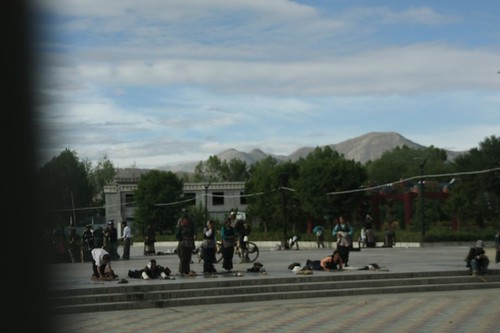
They were some monks and other Tibetans playing musical instruments.
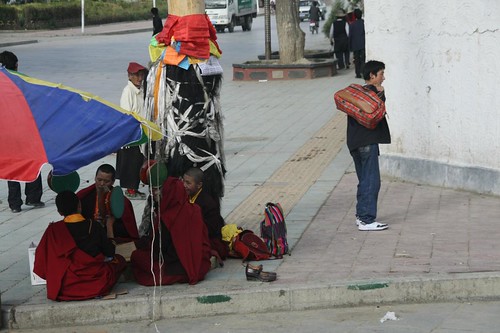
A Tibetan man playing a song with his traditional musical instrument
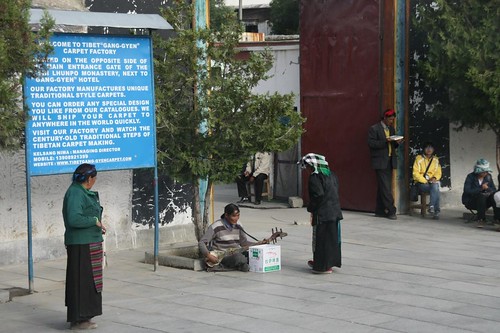
The gate of the monastery
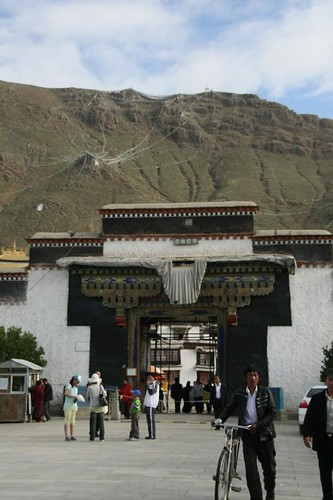
One of the red buildings that stands out among the others
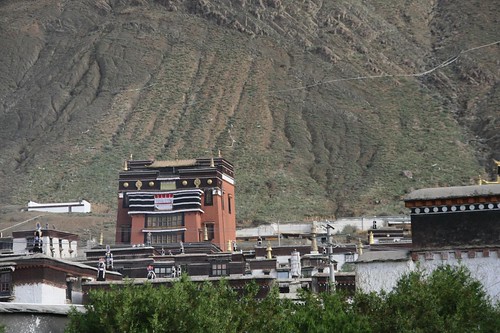
People would bring these yellow bags of white powder which they pour at the altars of Buddha or great Lamas as offerings. I am not sure what the powder is, maybe yak butter?

The grandest red building in the monastery and I am guessing it is the Qamba (Maitreya or Buddha) Hall that enshrines the 26.7m bronze statue of Buddha, the largest sitting Buddha statue in the world.
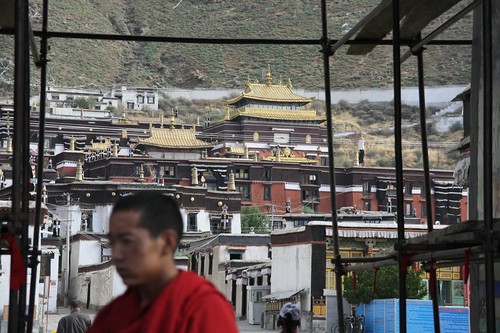
Worshippers resting on some step
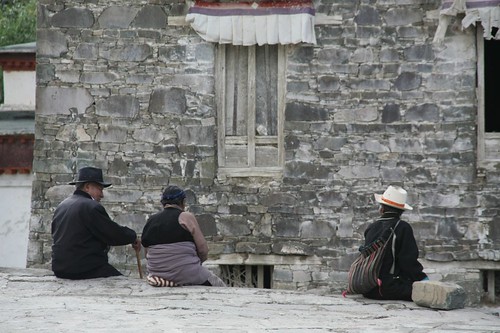
Clinic in the monastery
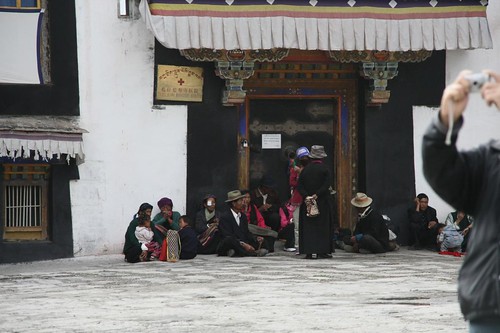
Big thangka wall to hang a big thangka painting during the Tibetan New Year.
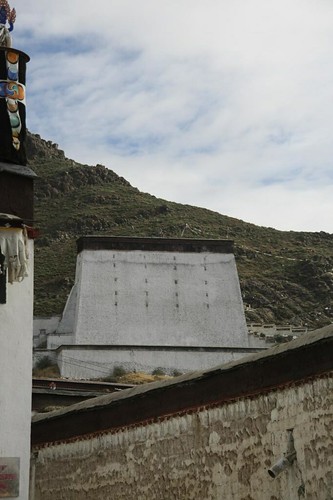
When the thangka is hung, the wall is supposed to look something like this though the designs vary with the occasions. Source: http://www.fantompowa.net/Flame/tibet.tashilhunpo.jpg
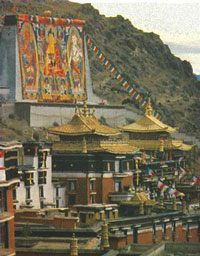
Empty alley
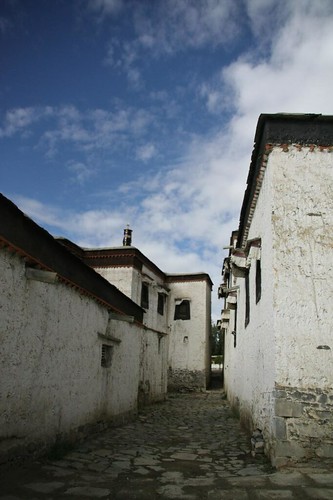
People walking up to the main halls
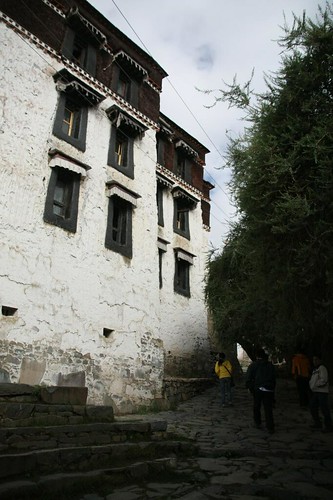
More people walking up
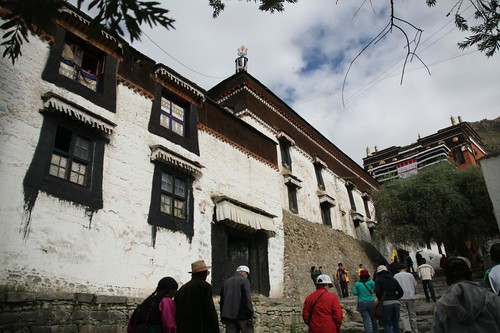
Stupas

Curtains in rags and mouldy walls
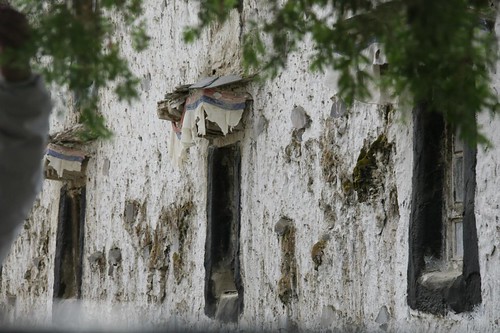
Pebbles placed around steps beside the stupas to keep count of the number of revolutions the worshippers have made. They'd better be sure to remember where their placed their pebbles.
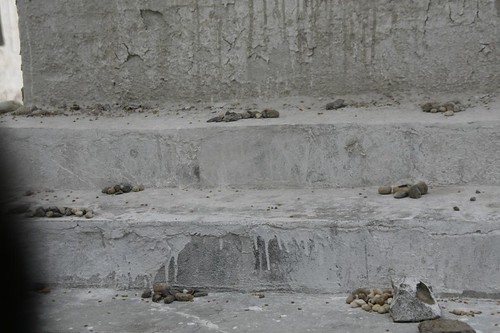
Lady doing a revolution around the stupas, spinning the prayer wheels.
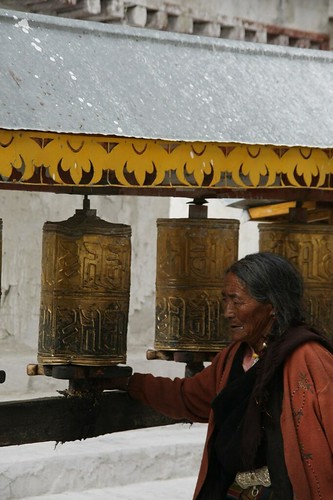
Monk walking along an alley
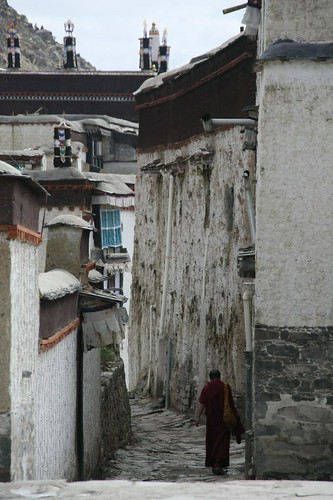
Ladies carrying their prayer beads and going around the stupas
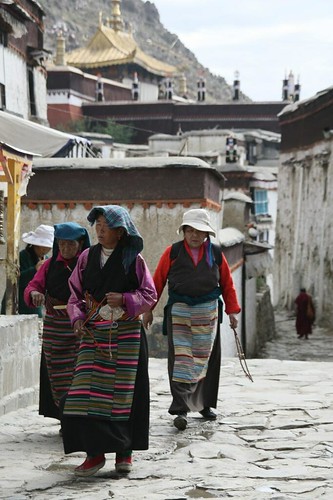
Windows through a red wall
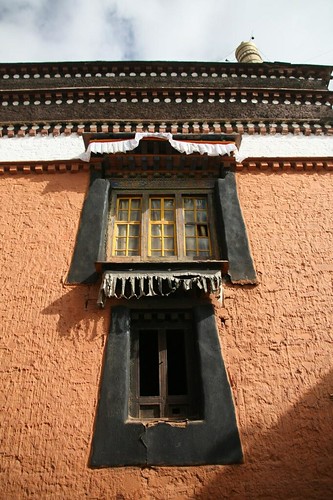
Elderly lady with a flask bottle
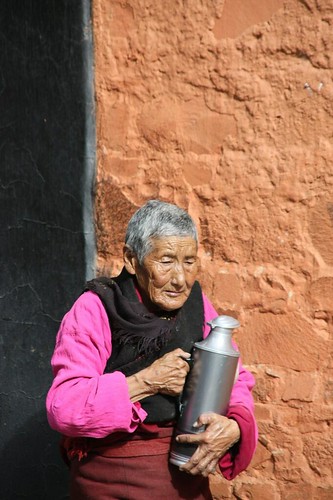
People entering into the red building
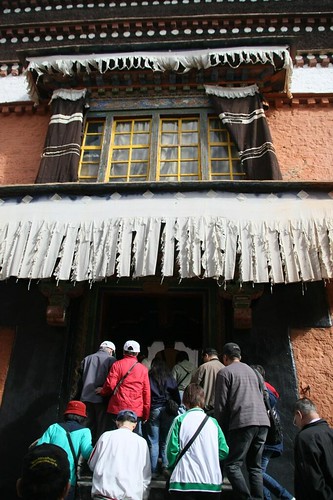
A bell by the entrance to announce your arrival

Going into the area where all the important halls are
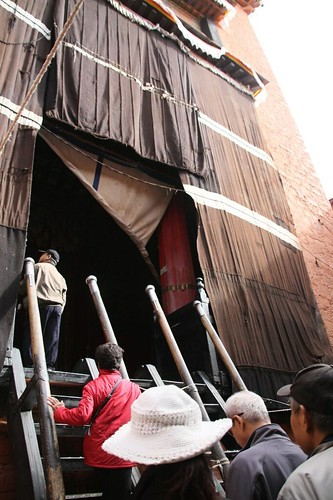
Wall paintings of the four deities of the heavenly gates
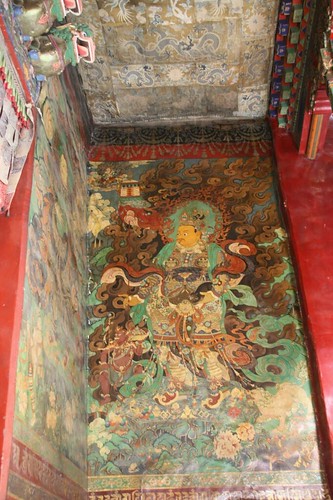
The Qamba (Maitreya or Buddha) Hall is 30 metres tall and enshrines the largest sitting Buddha statue in the world. Apparently, one of his nostrils could actually hold a person! The statue is made of 115,000 kg of red copper, 6700 taels of gold, 32 diamonds, 300 pearls, 1400 pieces of coral, amber and some precious stones. While all this seems so awesome and beautiful, it does make me wonder why is there a big extravagant Buddha statue with all its finery of the world here when poverty is widespread in the country? Perhaps, this is faith and the statue symbolises a union of people in one faith, and it continues to bring hope to the people while being a reminder to all the essence of Tibetan Buddhism, to be content and free oneself of all worldly things.
Remember the eyes drawing above the door at the upper floors of the One-Hundred-Thousand-Buddha Tower at the Palkhor monastery?
The lotus flower seat of the Buddha statue is 3.8metres tall and this is the back of the statue as we were going around it.
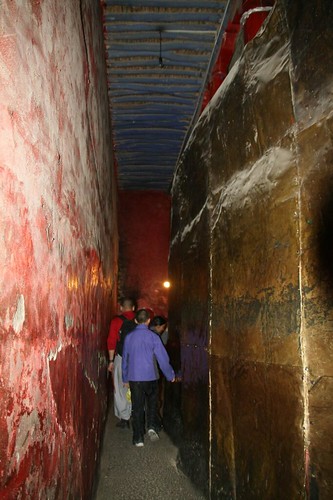
Monks who are taking care of the hall
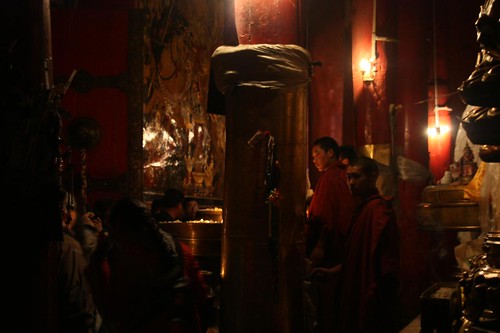
It is magnificent to watch as I stared at the gentle eyes of the statue. It makes me want to hold on to my belief that all the goodness that I have known can exist in the world, irrespective of religion, race or creed of anyone.
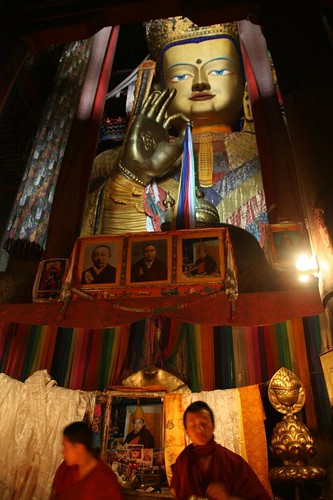
Worshippers climbing up the ladder into the main hall

A glimpse of the Qamba hall
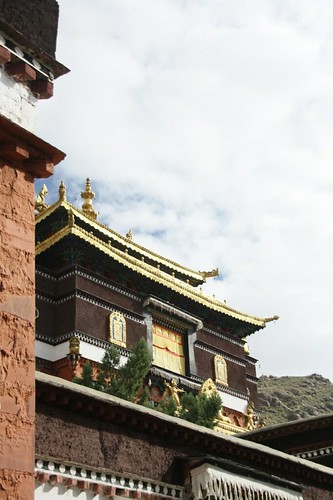
People walking to other halls
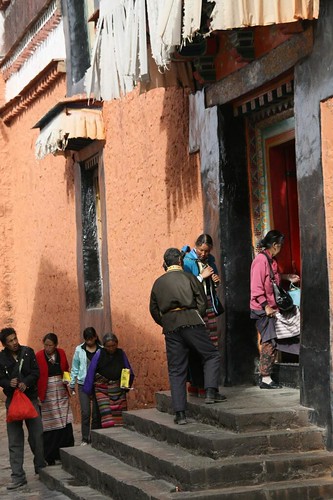
Lady with a portable prayer wheel

Going to the 10th Panchen Lama memorial hall
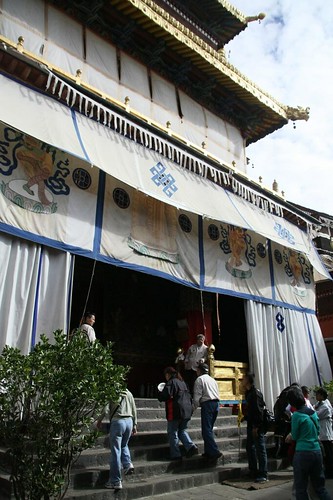
A signboard saying "The Great 10th Panchen Lama Gilded Stupa Memorial"
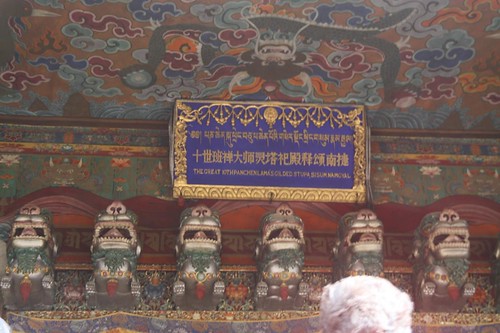
Stupa of the 10th Panchen Lama
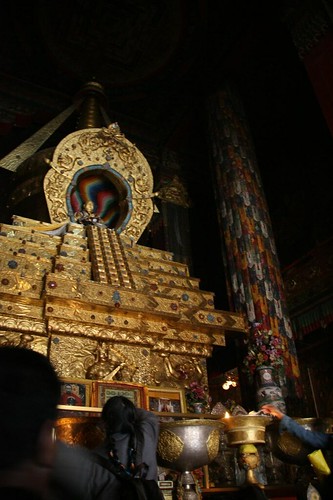
The hall and stupa used 614 kg of gold, 275 kg of silver and more than 10,000 pieces of precious stones ammounting to over US$7.73 million. The walls are decorated with paintings about the Panchen Lama.
The stupa is adorned with precious metal and stones. At the top, the stupa is intricately crafted with designs of animals and mythical creatures.
It's unbelievable there is so much gold and treasures in this structure. Reminds me of the stupa of the 5th Dalai Lama which was much grander.
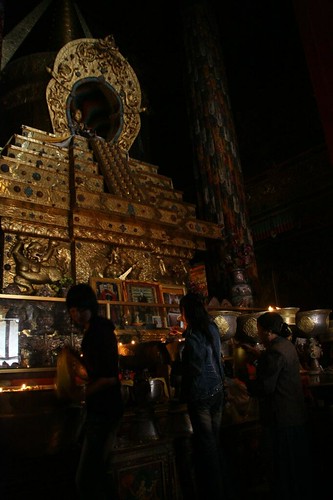
Beautifully painted ceiling and heavily decorated cloth pillars that hang from the ceiling
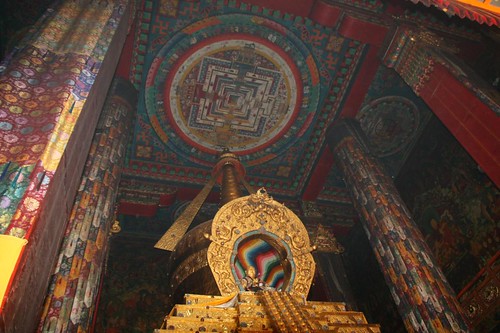
The walls in the 10th Panchen Lama is completely covered with paintings. Again, a small fee has to be given to take photos in these halls.

Paintings of animals and mytical creations on the walls of a passage into the hall
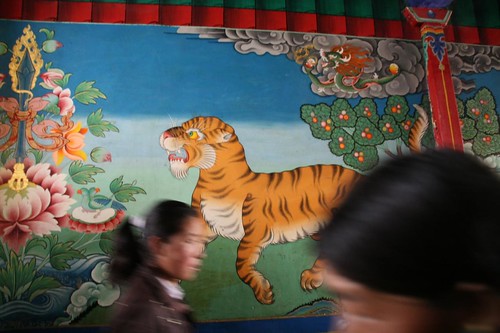
Alley in total darkness lit up by the camera flash lights
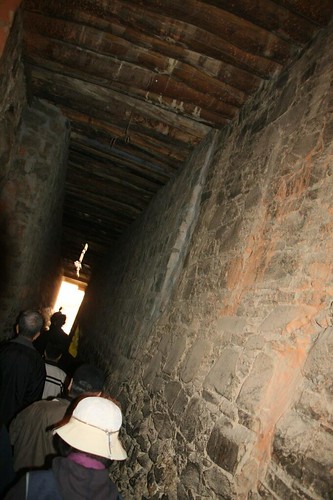
More steps and doorways to enter
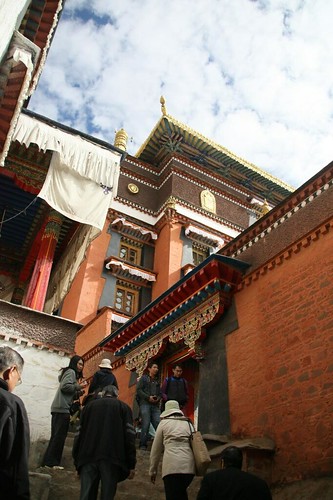
Monk watering plants
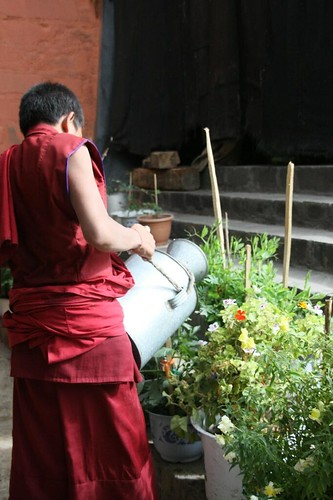
Lady cleaning the monastery
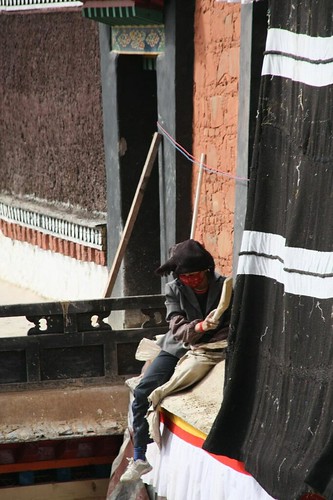
Monastery building with many floors
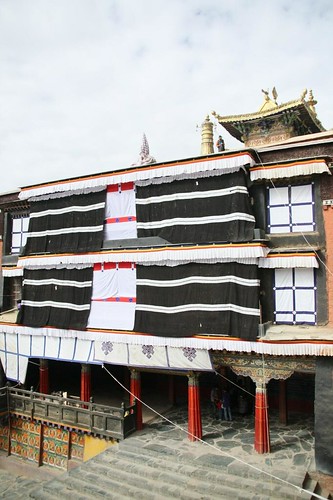
In the courtyard, people are busying about cleaning
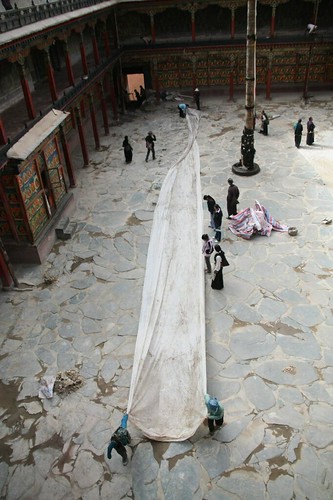
Entering into a memorial hall
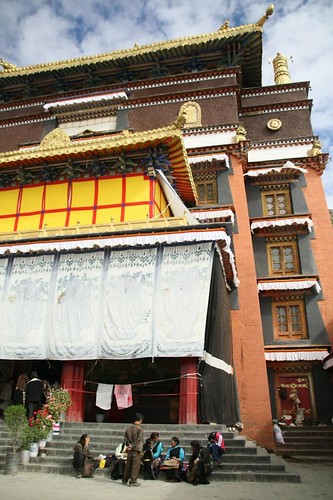

Stupa of one of the Panchen Lamas

Money was stuffed around the urn
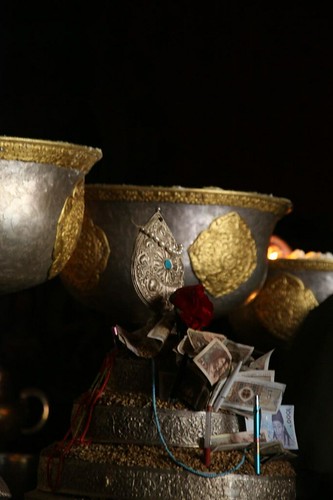
Buddhist offering stuff onto the urn from the yellow bag
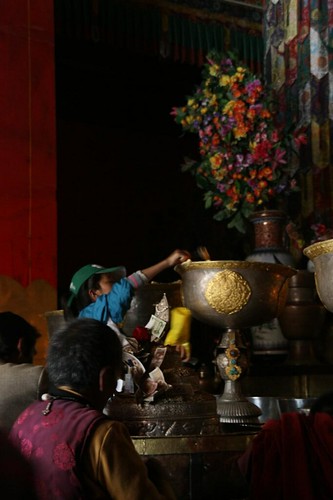
Coins stuck on the door beams

On our way out, we saw a building with dirty walls
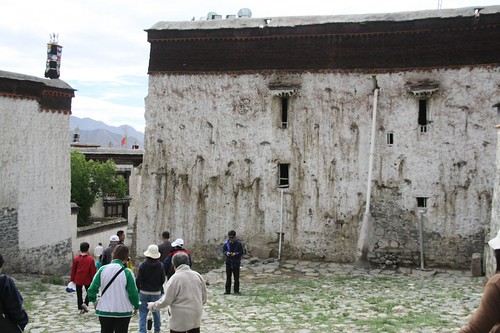
People coming and going along the alley
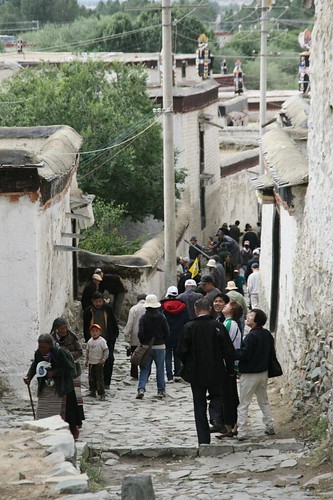
Some Tibetans doing paintwork on the walls
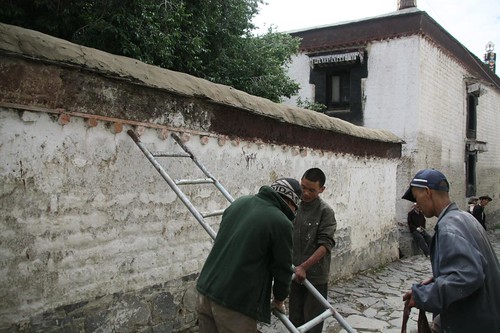
A door leading to a monastery quarter
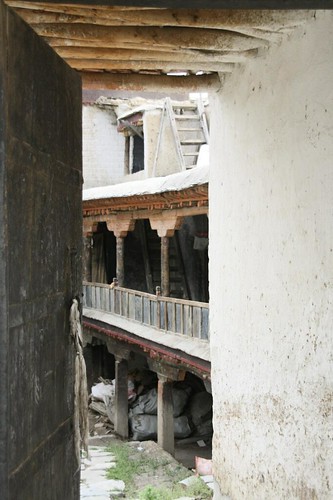
The entrance gate from inside the monastery ground

At the compound in front of the monastery
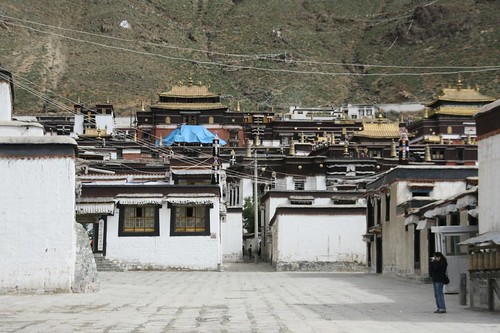
Some men sitting in the shade
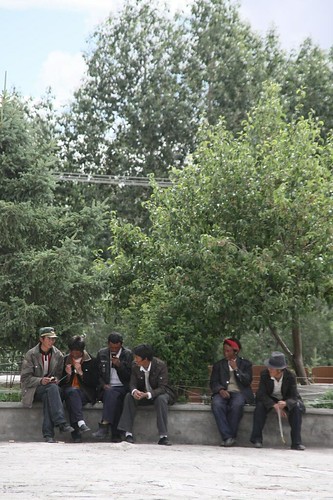
Prayer flags and kataks (white, thin, silk scarf) strung together into a mesh covering the mountain slope
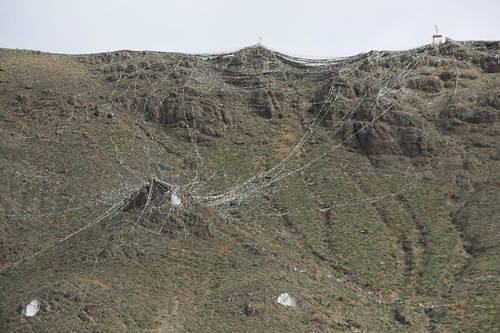
Gate of the Tashi Lhunpo Monastery
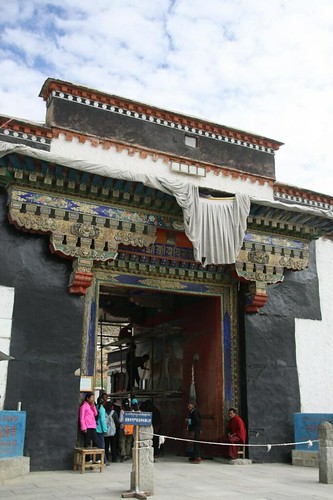
A picture with both our guides
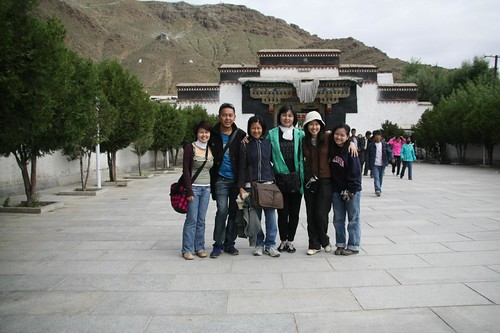
A massive fly in the coach! It's almost as big as those big yellow Brunei bees!
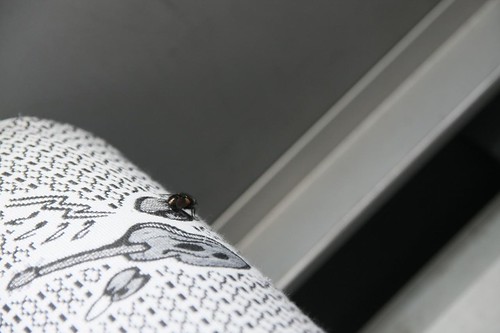
Lady selling altar offerings in yellow bags
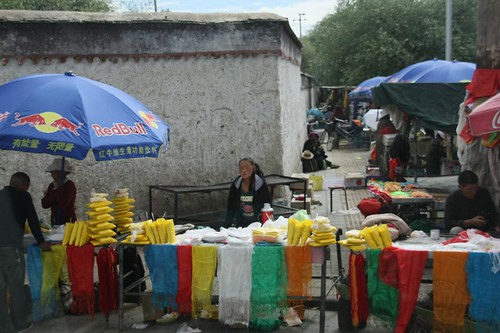
No comments:
Post a Comment